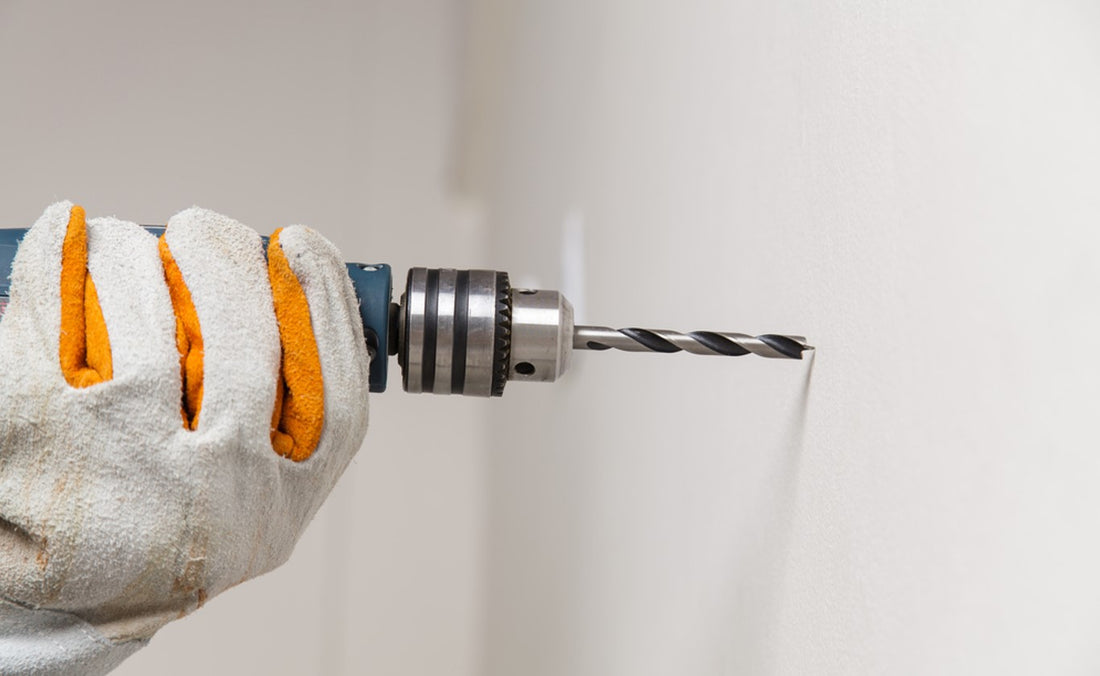Drywall anchors are incredibly useful for mounting anything securely on drywall without damaging the surface. While drywall anchors serve a relatively simple purpose, you must choose the correct drill bit size to install one properly.
To help you install drywall anchors correctly, we will explain how you can select the appropriate drill bit size for the job. We will also provide a quick overview of drywall anchor installation and some helpful insight into the various types of drywall anchors out there.
What Is a Drywall Anchor?

Basically, a drywall anchor is a simple device installed through the drywall. Since drywall can be very fragile, especially at its surface, the primary function of drywall anchors is to reinforce a hold and distribute weight more evenly than a simple screw.
The drywall anchor applies pressure on the back of the drywall so the item that is being held up does not come loose and fall. Not only can they provide a much more secure and stable hold, but they also prevent the drywall from crumbling.
Types of Drywall Anchors You Can Use
Before we get into the correct drill bit size for installing a drywall anchor, it is worth explaining some of the most common types because different drywall anchors can require different drill bits.
Toggle Bolt Drywall Anchors
These consist of a bolt held in place with spring-loaded wings. The wings expand once the anchor has been put through the drywall, which helps distribute the weight more efficiently. They are ideal for heavier items that would damage the drywall if held up with a less secure drywall anchor.
Threaded Drywall Anchors
With a threaded drywall anchor, the anchor is inserted after a pre-drilled hole. As you can imagine, drill bit selection is critical with threaded drywall anchors. While they cannot hold the same weight as a toggle bolt drywall anchor, they can still support relatively heavy items if installed correctly.
Self-Drilling Anchors
These unique drywall anchors use sharp and threaded tips that can be drilled directly into drywall, so you do not have to pre-drill a pilot hole. Like threaded drywall anchors, they can support medium loads, but their main advantage is how easy they are to install.
Expansion Drywall Anchors
The most common and budget-friendly option is the plastic expansion anchor. You drill a pilot, then insert the anchor into the hole. Once this is done, you drive a screw into the anchor, which expands it and applies pressure on the surrounding drywall.
Selecting the Correct Drill Bit Size for a Drywall Anchor
Now that you are familiar with the most common types of drywall anchors, we can get into a general guideline for drill bit size selection.
- Toggle Bolt Drywall Anchor Drill Bit Size: Since toggle bolt drywall anchors require a much larger hole than other types of anchors, as the hole needs to accommodate the spring-loaded wings, you will need a larger drill bit. The drill bit must match the diameter of the toggle bolt anchor. Generally, these anchors can require a drill bit size in the range of 1/8 inch to 1/4 inch. While the range is broad, toggle bolt drywall anchors come in various sizes, as they are designed to hold some of the heaviest items you can secure in drywall.
- Threaded Drywall Anchor Drill Bit Size: To install a threaded drywall anchor, choose a drill bit size that matches the anchor’s pilot hole. Typically, this will mean selecting a drill bit between 3/16 inch to 5/16 inch.
- Self-Drill Drywall Anchor Drill Bit Size: Since self-drilling anchors have their own built-in screw, you must apply firm pressure clockwise. You do not need to drill anything, so you should not need to select a drill bit!
- Expansion Drywall Anchor Drill Bit Size: For expansion drywall anchors, you will need to drill a pilot hole that matches the exact diameter of the anchor itself. Like toggle bolt anchors, this usually means using a drill bit between 1/8 inch and 1/4 inch.
Drywall Anchor Drilling Tips

To help you install your drywall anchors correctly, here are some essential tips you should follow:
- Use a slow speed when drilling into drywall, as this will help reduce the chances that the drywall will crack or flake.
- Always hold the drill with a straight and steady grip. Drywall anchors do not work well when driven in on an angle. To ensure a strong hold, you should drill in a level, perpendicular angle to the drywall.
- Always locate the wall studs using a stud finder before you start drilling.
- Always wear the appropriate safety gear, including a dust mask and goggles. This will help you avoid breathing in drywall dust.
- Insert the drywall anchor carefully after any sort of pilot hole has been drilled. You may need to perform a slight twisting motion to make sure the anchor sits flush with the outer surface of the drywall.
- Always purchase and use high-quality drill bits that will not damage your drywall or the anchor itself.
Final Words
While drywall anchors are incredibly useful, their ability to support items can be compromised if not drilled correctly. Take the time to ensure that you are using the right size drill bit for the specific type of drywall anchor you chose.
Most will directly list the appropriate drill bit size on the packaging, so you should not encounter any problems. To learn more about selecting and using drill bits, we recommend reading Drill Bit 101: How to Put a Drill Bit in a Drill.
You can also read Exploring the Different Types of Drill Bits for a detailed explanation of some of the most popular drill bits.

